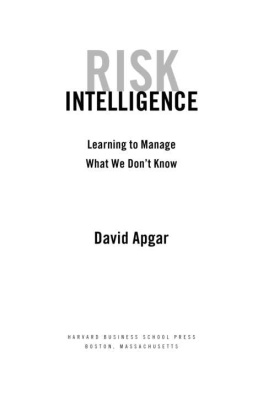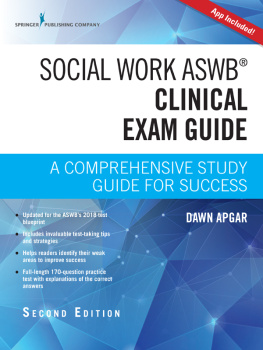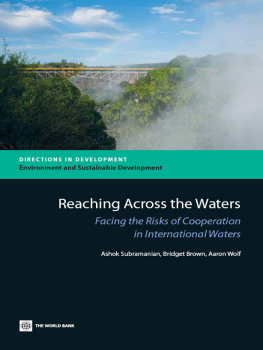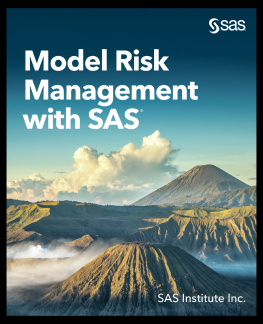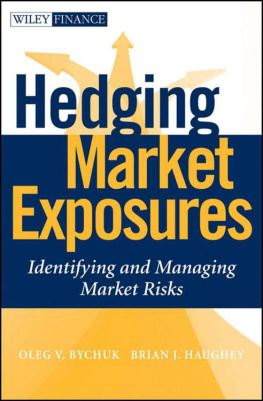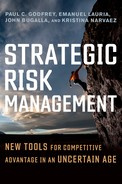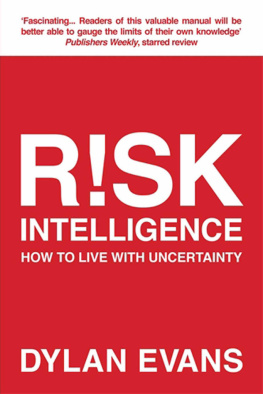Learning to Manage
What We Don't Know
David Apgar





To Helen and HoltApgar
1 1
My first thanks go to the reader, who may be a little curious about how I came to write this book-a practical guide to making decisions about nonfinancial risks that throws a fair amount of financial risk management orthodoxy overboard. The answer is that I spent years on financial risk management-as a technically oriented investment banker for financial institutions at Lehman Brothers, as an adviser in the Treasury Department's bank supervisory arm, as a McKinsey consultant focused on money center and multilateral bank risk management, and as the manager of the Corporate Executive Board's best-practices program for insurers. The combination forced me to solve financial risk management problems from an unusually wide variety of angles.
About five years ago, however, I helped launch the first of several best-practices programs at the board for executives who have to deal with risk in nonfinancial sectors. Imagine my surprise when I found the best financial risk management theory and practice in the world really didn't address the needs of people running nonfinancial businesses. Financial risk management doesn't have to deal with the vast differences in what and how fast people can learn about real risksabout operating risks, and technology risks, and business risks, and security risks, and strategic risks. And yet the vast majority of texts and consultant presentations try to shoehorn these nonfinancial risks into the standard financial risk management framework. So I had to write this book.
My second thanks go to the hundreds of members of the Corporate Executive Board's programs for CFOs, treasurers, and controllers whose alert questions and probing discussions have shaped my view of existing best risk management practice. Unlike the board's studies, this book goes beyond demonstrated practice to what seems to be missing from the modern risk management toolbox. To be effective, such a book needs the firmest possible foundation of what people are actually doing, and for that I owe a great debt of gratitude to the board's creative and diligent members.
To these principal debts I would like to add some personal notes of thanks. Big thanks go to Stephen Altschul of the National Institutes of Health for his unstinting friendship, for providing a remarkable window onto how hard thinking about probability is shaping our view of genetics and evolution, and for orienting me to technical aspects of information theory that underlie some of the practical tools in this volume. In particular, he showed where the book's definition of relevance as the complement of the surprise, improbability, or information content of business experience subject to a risk intelligence score may fit into standard information theory.
Joe Firestone, who runs Knowledge Management Consortium International, provided patient counsel and useful argument. His painstaking review of the manuscript improved it immeasurably. Joe's passion for truth, skepticism about proof, and conviction that organizations can solve their risk problems faster by opening themselves to internal conjecture and debate are infectious.
Particular thanks go to the Corporate Executive Board's Scott Bohannon, who not only provided generous encouragement but found creative and efficient ways to keep me involved with board members during the time I spent on the book. I am also grateful to Roger Leeds and Gordon Bodnar at the Johns Hopkins School of Advanced International Studies for allowing me to test some of the ideas in the book through a course on risk management for MA candidates concentrating in finance.
Howard Yoon has been as much a collaborator as a literary agent and inspired much of the practical orientation-with no loss of rigor-that I think is a strength of the book. And Kirsten Sandberg, at Harvard Business School Press, combines sharp substantive judgment and crisp writing to be a gift of an editor. With an incisive creative team like Kirsten and Howard, the book's flaws have to fall all the more glaringly to the author's account.
Instead of the typical remorse-toward-suffering-spouse paragraph, I am happy to report that Ann Marie Moeller gives as well as she gets, and her remarkable book on the language of kimono is due out soon. Her support deserves no fewer thanks for that!
Let me also thank my dear friend Greg Rest for his timely suggestion of the story of Wilmer McLean that opens the book and the Controller Leadership Roundtable's Cigdem Oktem for suggestions on how to tell it; Neil Gaskell for a wonderful interview on his time with Shell in Borneo and, more generally, for years of great advice on financial management; Brian Tsui at the Treasury Leadership Roundtable for his help with the data backing up the chapter 2 sidebar on yield curves; and Stanford's Bob Hall for conversation and advice on his evolving view of how equilibrium sticky wages affect the job-finding rate in recessions.
Changing Your Approach to Risk
Two years after marrying Virginia Howe Mason, a rich widow, Wilmer McLean retired from his wholesale grocery business in the bustling town of Alexandria to a farm called Yorkshire in northern Virginia's Prince William County. Over the next seven years, he and his wealthy bride had two children and entertained friends in grand style. Then in May 1861, Confederate regiments set up camp on the southern part of his farm because of the natural barrier afforded by the stream-called Bull Run-running through it.
Scarcely had General P. G. T. Beauregard asked to use McLean's stone barn on July 18, 1861 when a Federal shell dropped through the farmhouse chimney into a kettle of stew, exploded, and ruined the general's staff lunch.' The ensuing skirmish gave little hint of the ferocity of the first battle of Bull Run that would launch real hostilities three days later on McLean's farm.2
His proximity to the newly formed Confederate line created an opportunity-building a bigger wholesale business to supply the troops with sugar while living in genteel rural splendor. But high risk attended that opportunity-there was, after all, an army in his backyard. Still, there might be a way to seize the opportunity and cut the risk. If he relocated closer to the heart of the South's supply chain in Richmond but stayed far enough outside the city, then he might avoid the army altogether and maintain his comfortable landed lifestyle.

